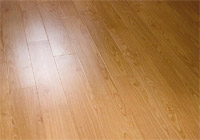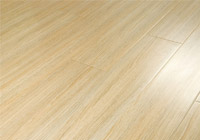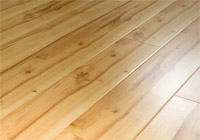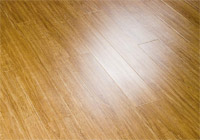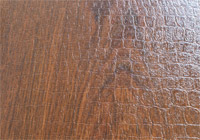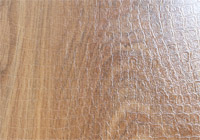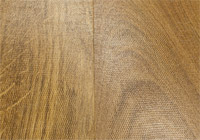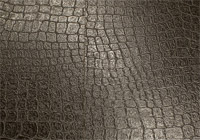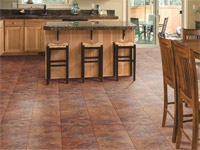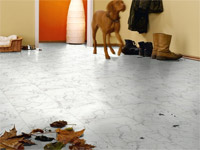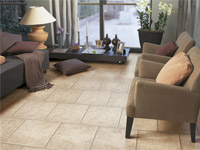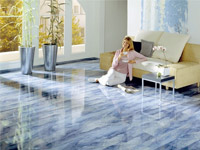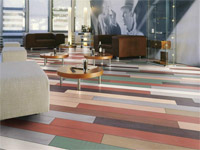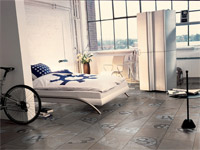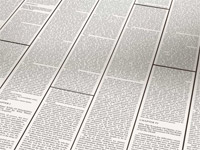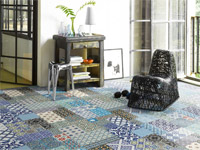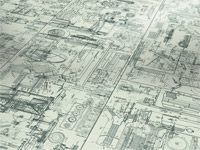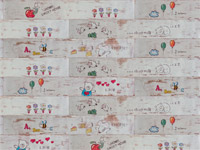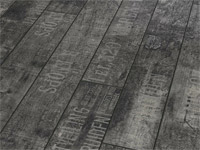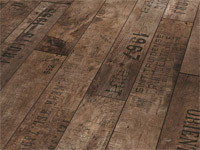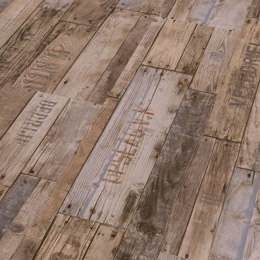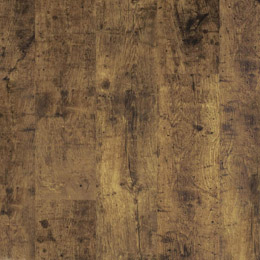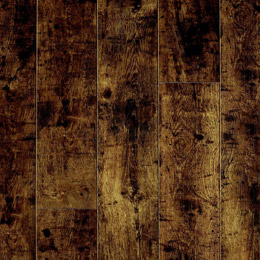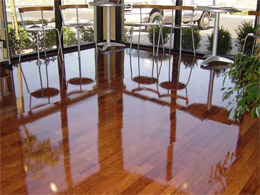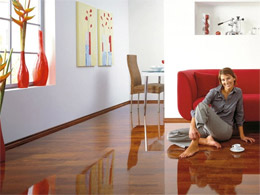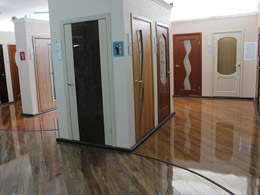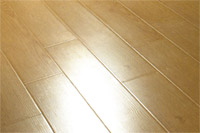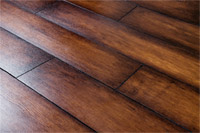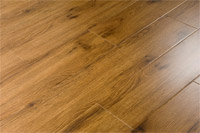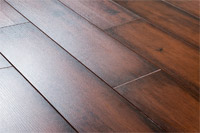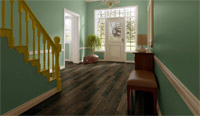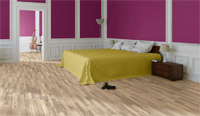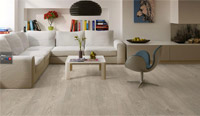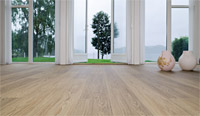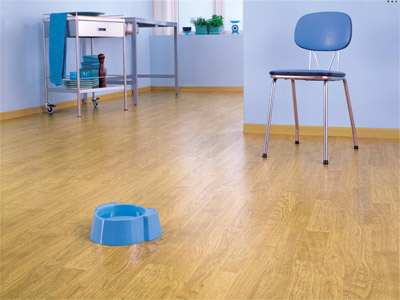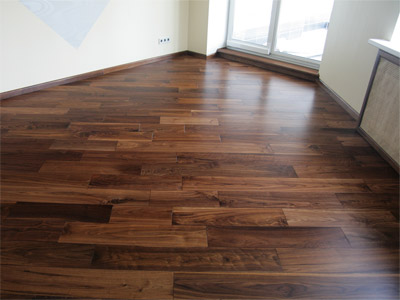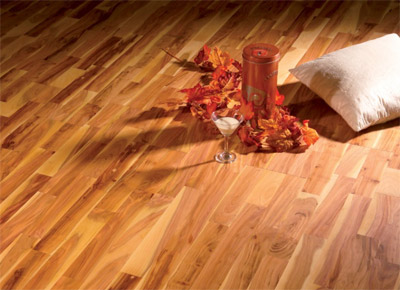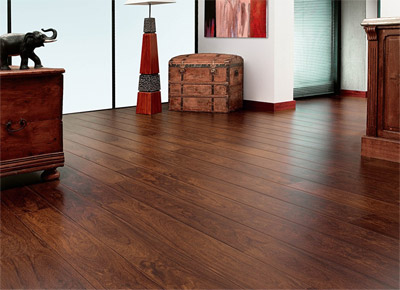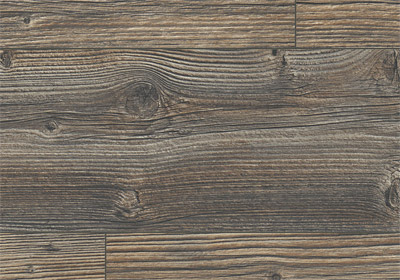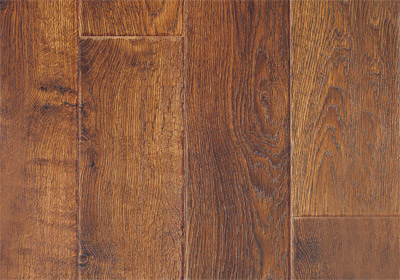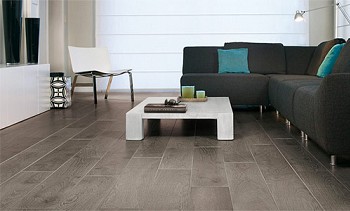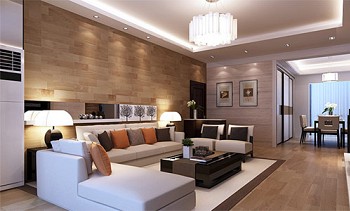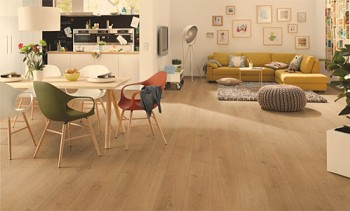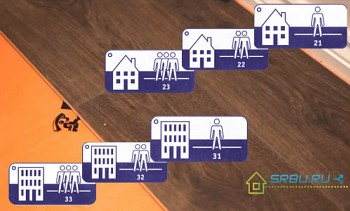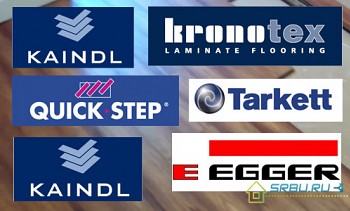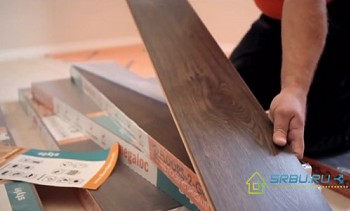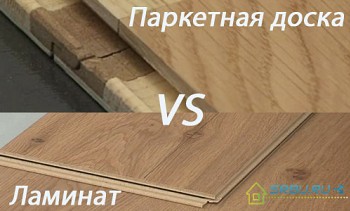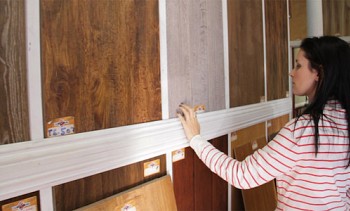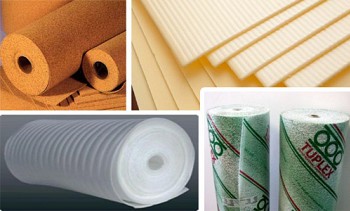What are the types of laminate flooring: everything a customer needs to know
Making your apartment or house, I want to do everything with taste, using practical and beautiful modern materials. When it comes to flooring, they often turn to laminate flooring, the variety of which never ceases to amaze. In this review, we will consider what types of laminate can be by design, surface, locks and wear resistance class.
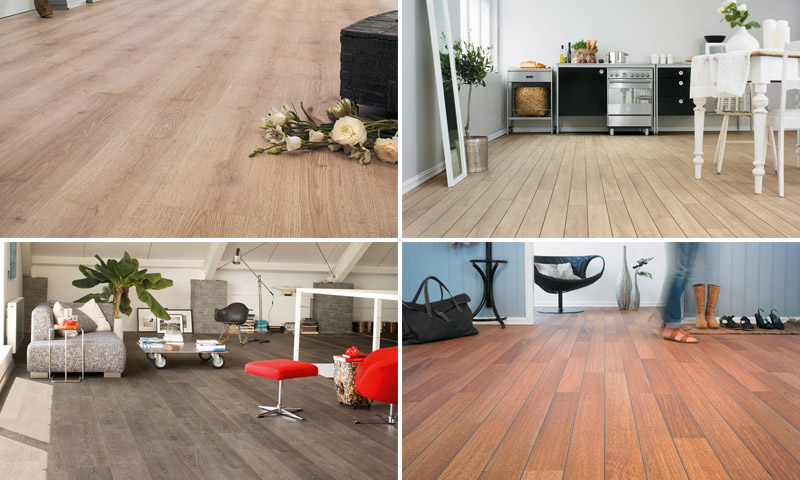
Content:
Types of Laminate by Design
Artists show a lot of fiction, creating new types of design for this material. It is covered with original patterns and drawings, the surface texture is changed, making it sometimes rough, then matte, then shiny-glossy.
Classic tree
They began to imitate a lively and warm wooden surface a long time ago. In principle, the laminate was created as a budget variation of an expensive floorboard. It turned out well, and laminated boards, very similar to oak, birch or maple, look no worse than parquet. Even the characteristic pattern of various species of wood is conveyed very accurately. Examples in the photo below.
Leather luxury
Many lovers of exquisite and unusual interiors will like the floor of an office or living room made of laminate, decorated with crocodile skin. And if you finish the walls with this material, you will get something completely unusual. German-style collections are produced by German firms Classen and Proteco. However, this is a premium class, and the cost of products is far from budgetary.
However, a “leather” laminate can be bought at a more affordable price. Russian manufacturer Ritter offers practical, durable and inexpensive coatings that imitate the skin of not only a crocodile, but also various reptiles. They look chic and stylish, see the photo below.
Metallic luster
Such a design direction as high-tech involves numerous glass and metal parts. In this case, a laminated metal coating will be very appropriate. For example, from the Design Cargo Metal collection from a German brand Kronotex. A similar floor will look great in a teenager’s room or in a kitchen with an abundance of stainless steel elements, a modernly furnished living room, a nightclub or a shopping center.
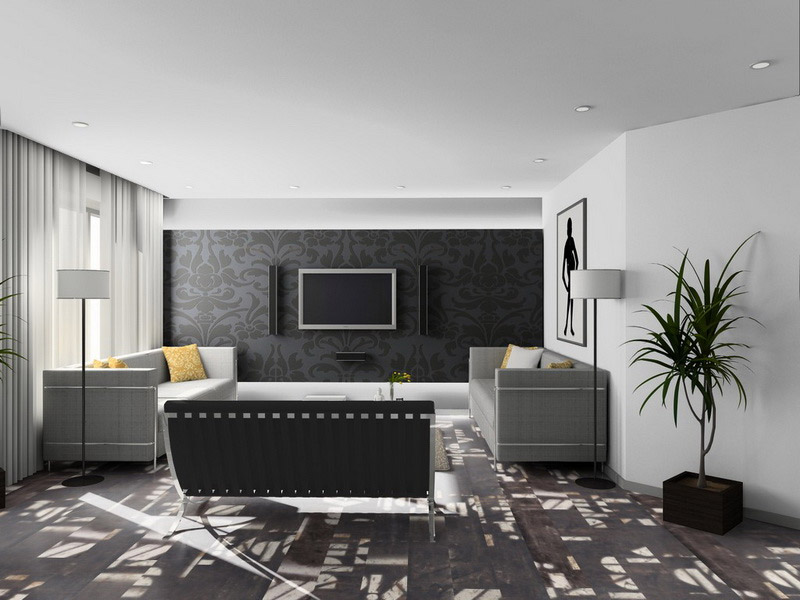
Stone calm
Stone floors give a feeling of reliability and durability. That's just cold they are, which is not very comfortable for bare feet. In addition, the purchase and installation of porcelain tiles is very expensive. Laminate manufacturers thought and decided to fix this shortcoming. They released a warm and pleasant to the touch material that perfectly imitates the appearance of the stone.
Almost all well-known brands have “stone” collections. We’ll name companies as examples. Parador, Alloc, Kronotex, Egger, Quickstep, Witex. Such flooring can be laid in the corridor, kitchen or bathroom. They combine well with the decor, where there is a stone finish, as well as with fireplace rooms. Below are photos of various types of laminate with such a surface.
Designer Laminate
Collections called designer ones are distinguished by a whirlwind of colors and unpredictability of lines. Their patterns and textures are exclusive, not one type of laminate is like another. So, Kronotex offers to travel around the city or around the globe, purchasing products on which maps are printed. For the pop art style, this is very good. Want home comfort - buy an unusual laminate from the same brand, similar to burlap or canvas.
Parador from Germany, with its TrendTime and Edition collections, amazes customers. What is missing here are drawings of Leonardo da Vinci, animal skins, ancient cave paintings, abstract drawings of acid flowers.A more modest, but very original collection of Total Dezign from Pergo will surprise with handprints and barcodes.
The manufacturers did not forget about the kids. Kronotex prepared them products with funny and funny drawings (for example, “Pink Bambino”). The company Classen is a collection of Joy Kids, from which we can distinguish products from Kitty, so beloved by little girls. Austrian brand Kaindl released the Soft Touch collection. The floor in the playroom or in the teenager’s home looks great, decorated with original stamps and drawings scorched from wood.
Laminate surface difference
Considering the types and properties of the laminate, do not forget to talk about the texture of its upper layer. After all, the appearance of the flooring largely depends on it.
Classic wood surface
This laminate is smooth to the touch. But to make the coating boards look more natural and natural, slightly noticeable dashes and pits are made on the top layer. They depict the pores of wood, and it is quite possible to see them without a magnifying glass.
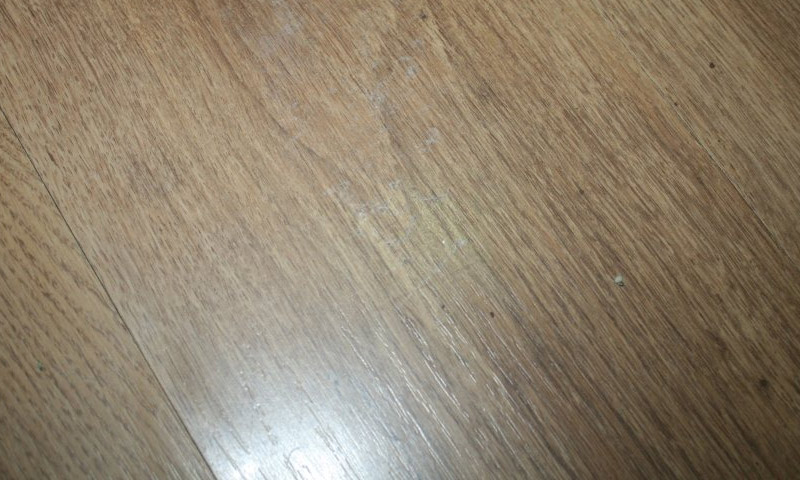
Type of aged tree
Wooden products that have been outdoors for a long time inevitably age. Their surface takes on a look different from the new tree. To make the laminate look like aged wood, noticeable smoothed bumps are created on it.
Gloss
The shiny laminate flooring looks great in the kitchen, giving it a radiance of cleanliness. Such a laminate resembles wooden boards generously coated with varnish.
Texture
The wood fibers appearing on the surface give the impression that we are really looking at a natural material. A weakly visible relief (as in the collection with the name Emotion from Egger) allows achieving such an effect.
Relief
Thin features-recesses along the entire length of the laminated board (usually chamfered) are not designed to copy the picture of the wood structure. They only slightly mimic the roughness of a tree.
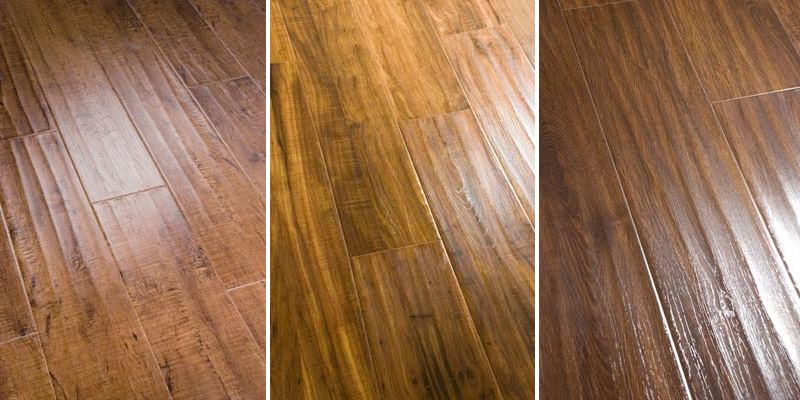
Natural surface
In a wooden product, slightly varnished (in one or two thin layers, no more), all pores and patterns characteristic of this breed are perfectly visible. This is exactly what a laminate with a natural surface looks like.
Shea
This laminate is dull, pores are not visible on it, its boards are absolutely smooth and even along its entire length. In appearance, it looks like a tree that has been well proliferated.
Waxed surface
And if the tree is properly waxed, then it has an internal warm luster, slightly noticeable, but so cozy and lively. This type of laminate is often made to look like a massive board.
Country
The rustic style is very good in a country cottage. This coating is similar to wooden boards, slightly touched by a plane. The surface is obtained with a large relief, slightly smooth.
Laminate shape
Rectangular board
Most of the laminated coatings are available in the form of long (from 1.2 to 2 meters) boards. This is convenient when you need to lay the floor in a large room. It turns out quickly, but with convenient locks is also simple.
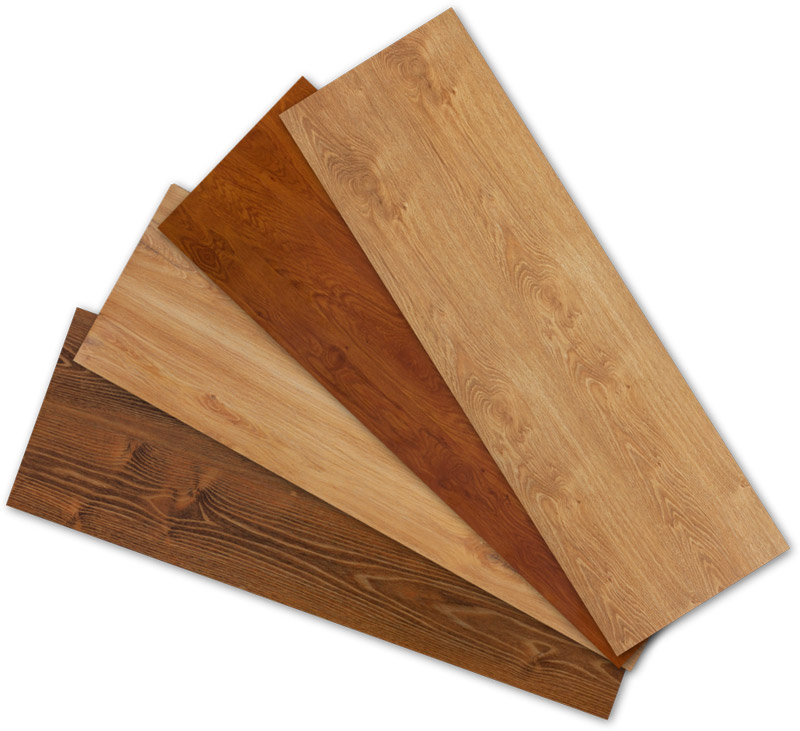
Tile
To make it possible to create more complex patterns, many manufacturers began to make a laminate in the form of a square tile. It costs a track than the previous type, but does not require a substrate. Yes, and putting it more conveniently, but in terms of repair with tiles is more difficult.

Laminate differences in joint locks
At the very beginning, laminated boards were necessarily fastened together with glue. Then they came up with a more convenient and original castle method, and many now prefer to use it. Here, the fastening of the boards is carried out by one of two types of laminate locks - which is better, we will find out now.
Locks (Locked)
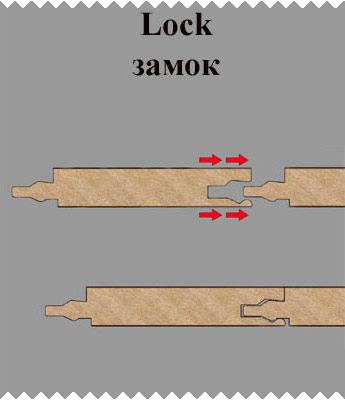
This type of locks was invented first. A curved protrusion is made at one long end of the board, and a recess is made at the opposite end.
When installing the flooring, these elements are connected to each other, and for reliability, they are tapped from above with a mallet hammer with a rubber or wooden tip. In addition, on the ledge there are combs that do not allow the castle to disperse.
Laminate bonded this way is cheaper.
However, it has many disadvantages:
- To create a high-quality surface, the laying of boards should be done by an experienced master. If this is done by a person who is not familiar with the laminate, then the result may turn out to be disastrous.
- With a heavy load, the locks will not last long - after all, the friction force will constantly act on them. The parts, wearing out and attrition, will eventually break. The result is ugly crevices on the floor.
- If the base is not smooth enough, then the lock-lock will also fail quickly.
Click Locks
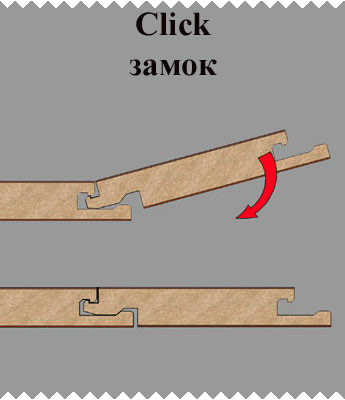
A more modern type of connection has gained recognition not only among professional builders, but also among home craftsmen. After all, click locks are so easy to snap that anyone can handle them. And no experience is needed. Putting the boards to each other at an angle of about forty-five degrees, just a little click on the lock. A quiet click - and everything is ready, without any tapping.
Let's note some more advantages of this type of locks. So, undergoing loads, they not only do not loosen, but on the contrary strengthen. Indeed, the compression force acts on the structure in this case. In addition, the connection, as a constructor, is collapsible. Another plus - when moving to a new apartment, you can take the floor with you. The downside is the higher cost.
Types of laminate according to wear resistance classes and loads
In order for the floor covering to serve for a long time, you need to worry not only about what types of locks the laminate has, but also choose it correctly for wear resistance. For this, we look at the class of the product - it happens from 21 to 34. The last figure indicates what kind of load the material can take on. With its increase, this quality improves.
We learn about wear resistance by the first digit. If this is a deuce, then we have before us a household laminate, which, by the way, is no longer produced in our country. It is suitable only for home use.
Here are its three classes:
 |
Class 21 - can only lie where no one walks (under the bed in the bedroom or in the pantry). And still, he won’t survive for more than two years. |
 |
Class 22 - will live under the same conditions twice as long. |
 |
Class 23 - is able to serve from four to six years. Previously, this laminate was even laid in the living rooms, kitchens and corridors. Not now. |
The three at the beginning of the marking means that the material is of an office (or commercial) type. In the apartment he will live twice, four times longer.
Office Laminate Classes:
 |
Class 31 - the least resistant to loads. In the office, his life will be limited to two or three years, but at home he will lie for ten years. |
 |
Class 32 - able to withstand the legs of office workers for three to five years. In the apartment - up to fifteen years. |
 |
Class 33 is even more resistant to shuffling soles. In the office, it will not be worn for five to six years, at home - for fifteen to twenty years. |
 |
Class 34 - the so-called "sports" coating. It calmly withstands a thousand people a day. Great for sports centers, shopping malls and office buildings. Well, in the house he can lie forever. |

